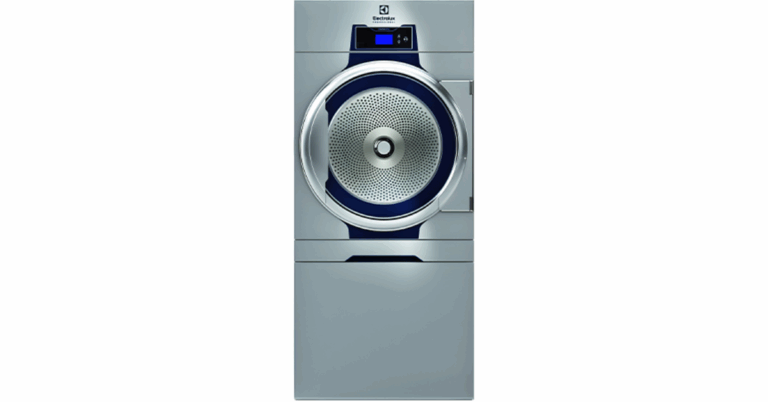The Essential Role of a Wine Cooler: Elevating Wine Preservation and Enjoyment
If you’re a wine lover, one appliance you should seriously consider adding to your home is a Wine Cooler. In today’s wine world, it’s not just about popping bottles and pouring glasses—proper storage plays a vital role in how your wine ages, tastes, and presents itself. For connoisseurs or casual collectors alike, a wine cooler ensures your bottles remain in optimal condition, safeguarding flavors, aromas, and quality over time.
What Is a Wine Cooler?
A wine cooler (also called a wine refrigerator, wine chiller, or wine fridge) is a specialized appliance designed to store wine at precise temperatures and humidity levels suited for long-term preservation or immediate serving. Unlike a regular refrigerator—too cold, too dry, and often subject to vibration—wine coolers maintain a stable environment that respects the subtle chemistry and fragile balance of wines.
Why Wine Coolers Matter
Temperature Stability
Wine is sensitive to temperature fluctuations. Heat can accelerate chemical reactions and degrade flavor, while cold can “freeze” or dull aromas. A wine cooler maintains a controlled environment—often with single or dual-zone settings—to keep bottles within their optimal temperature ranges.Humidity Control
Too dry, and corks can shrink or crack, letting air in and oxidizing the wine. Too moist, and labels might peel or mold may grow. A proper wine cooler helps maintain relative humidity at levels that preserve cork integrity and protect the bottle exterior.Vibration Reduction
Constant motion—compressor hum, fan movement, or door slamming—can disturb sediments or the delicate aging process. Many wine coolers employ vibration-dampening technologies to keep the wine’s structure intact.UV and Light Protection
Ultraviolet (UV) light can degrade organic compounds in wine, altering flavor and aroma. Most wine coolers feature UV-resistant glass doors or opaque designs to shield bottles from harmful light.Aesthetic and Functional Display
Beyond storage, wine coolers can become a design focal point in your home, bar, or cellar. They let you display your collection while giving you quick access to bottles at serving temperature.
How to Choose the Right Wine Cooler
Choosing a wine cooler isn’t one-size-fits-all. The ideal model depends on your collection size, drinking habits, space constraints, and aesthetic preferences. Here are key considerations:
1. Capacity & Size
Are you storing a few bottles for immediate enjoyment or curating a serious collection? Compact wine coolers may hold 6–20 bottles, while larger units or integrated wine cellars can manage dozens more.
2. Zones and Temperature Range
Single-zone coolers maintain one temperature across the interior—fine if you primarily drink one style (e.g., red or white). Dual-zone (or multi-zone) units let you set different temperatures (say, 12 °C for reds and 6 °C for whites), ideal for mixed collections.
3. Cooling Technology
Thermoelectric coolers are quiet and vibration-free but often suited only for smaller units and moderate ambient temperatures. Compressor-based models offer stronger cooling and greater capacity but may emit more noise or vibration—so quality design matters.
4. Door and Insulation
Look for doors with UV-filtering glass and tight seals to prevent heat ingress. Doors that open on hinges or slide out are choices based on space and convenience.
5. Shelving and Flexibility
Wood, steel, or aluminum racks, often on glides, make bottle placement and access easier. Adjustable shelving is beneficial if you collect bottles of differing sizes (champagne, magnum, etc.).
6. Humidity and Ventilation
A good wine cooler should maintain ideal humidity (typically ~50–70 %) and have adequate ventilation (especially for built-in models) to keep components from overheating.
7. Noise, Vibration, and Energy Efficiency
Check for low vibration, quiet operation, and energy ratings. Good insulation and efficient compressors help reduce electricity consumption.
Types of Wine Coolers
Freestanding units: Portable and easier to place anywhere there’s power and ventilation.
Built-in (or integrated) units: Designed to be installed flush within cabinetry or under counters. Requires ventilation planning.
Undercounter coolers: Compact examples of built-ins, ideal for kitchens, islands, or bar areas.
Large wine cabinets / cellar alternatives: More like custom cabinetry with cooling systems, for enthusiasts with large collections.
Best Practices for Storing Wine in a Cooler
Avoid sudden temperature swings – Don’t place units near radiators, ovens, outside walls, or direct sunlight.
Keep bottles horizontal – This ensures corks stay moist and airtight.
Limit door openings – Each time you open the cooler, external air enters, causing temperature shifts.
Regular maintenance – Clean interior surfaces, check seals, inspect for blockages, and service fans or compressors as needed.
Allow for wine “settling” – After moving wines or transporting them, let them rest in the cooler for a few days to let sediment settle.
Wine Cooler in Lifestyle & Design
Today’s wine coolers aren’t just functional—they’re stylish appliances that complement interior design. Sleek glass fronts, stainless steel touches, wood accents, and LED lighting enhance the display value. Whether tucked under kitchen counters or framed as a centerpiece in a dining room, they allow your collection to be seen and appreciated while being protected.
Plus, many brands now offer smart features—touch controls, digital displays, humidity readouts, even remote monitoring via apps—bringing convenience and precision to wine preservation.
Benefits for Different Wine Enthusiasts
Casual drinkers: Keeps a few favorite bottles at ready-to-serve temperatures.
Entertainers / hosts: Offers flexibility to chill whites/rosés while preserving reds, and display bottles when guests drop by.
Collectors / aging enthusiasts: Provides long-term storage conditions akin to professional cellars, ensuring your wines mature gracefully.
Common Misconceptions
“A regular refrigerator is fine.”
No—standard refrigerators are too cold (often 3–4 °C) and dry. Over time, this can damage wine.“Perfect temperature means higher is always better.”
Too much heat ruins wine. Even “room temperature” (25 °C or more) is often too warm for preservation.“Bigger is always better.”
Buying a massive wine cooler you can’t fill may lead to inefficiency. It’s better to match your actual needs.
The Investment Value
Owning a wine cooler is an investment in both your wine enjoyment and the longevity of your collection. Bottles—especially premium ones—can be expensive. Without proper storage, you risk spoilage, off-flavors, or degradation. A well-built wine cooler, even medium-range, often pays for itself by protecting your collection.
Tips for Getting the Most from a Wine Cooler
Map out where you’ll place it ahead of time (consider ventilation, outlets, stability).
Monitor temperature and humidity regularly (many units offer built-in sensors).
Rotate older bottles forward so they don’t get forgotten.
Allow space in front or at the back for air circulation.
Consider combining with ambient cellar conditions if your home or basement is naturally cool and humid.
In Summary
A wine cooler is more than a glorified fridge—it’s a precision instrument for wine care. It preserves your investment, enhances the drinking experience, and integrates seamlessly into your home’s aesthetic. Whether you’re just starting your collection or fine-tuning your wine aging strategy, investing in the right wine cooler can make all the difference between a bottle that underperforms and one that sings.







